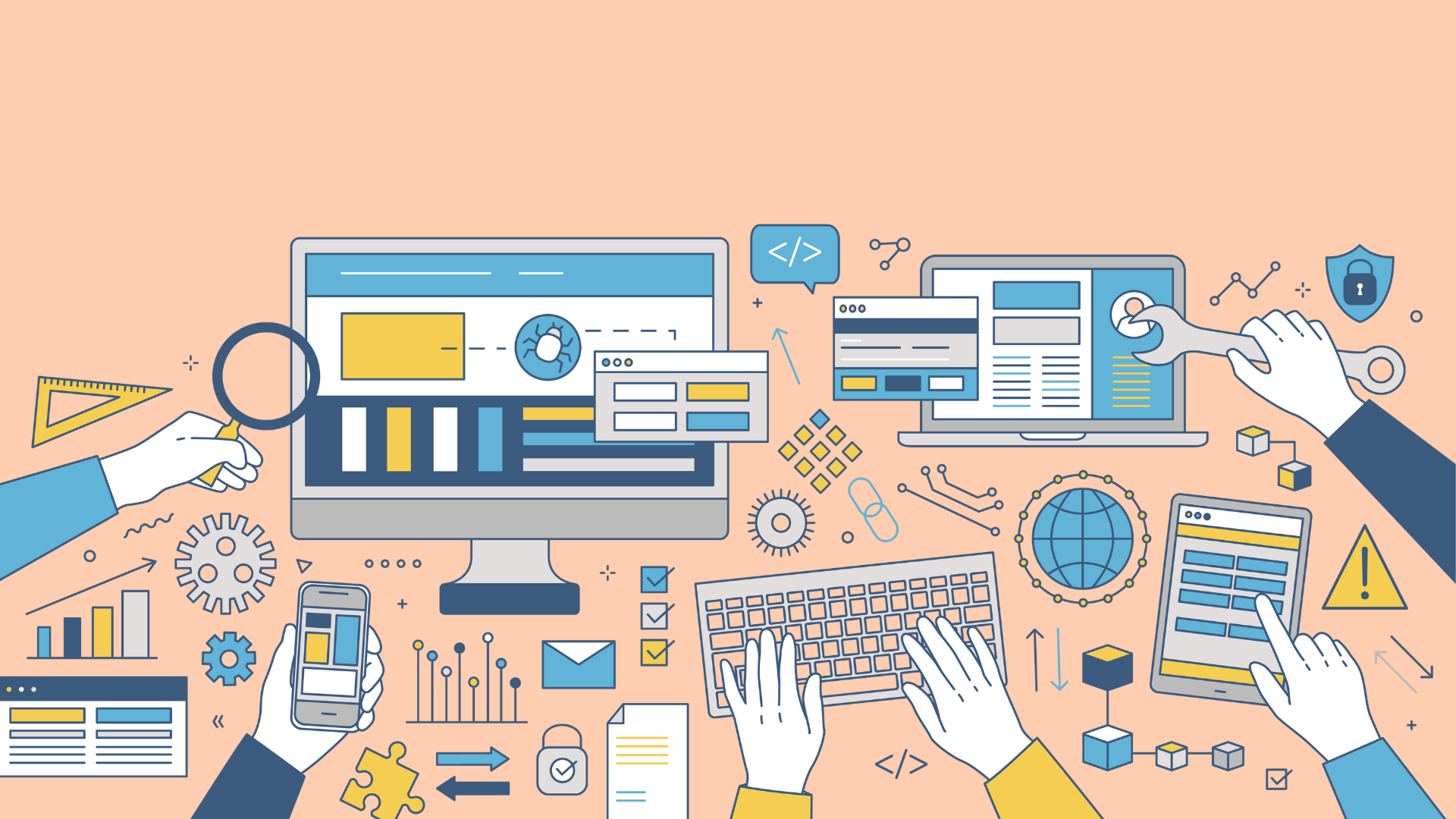Table of Contents:
- What Is IT Asset Management (ITAM)?
- Why Is ITAM Critical for Organizations?
- The ITAM Process Step-by-Step
- How to Select the Right ITAM Software
- Implementing ITAM Best Practices
Introduction
So you've got a lot of IT assets in your organization? Computers, software, servers, networks, the whole thing.
But do you actually know what you have, where it is, and whether it's still useful? If not, you need to get serious about IT Asset Management or ITAM.
ITAM is how you track all your IT assets to make the most of your tech investments.
Without an ITAM program, you're wasting money, time, and productivity. Unmanaged assets lead to unused software licenses, lack of standardization, security risks, and limited visibility into what's really going on in your IT environment.
But don't worry, implementing ITAM is totally doable and the benefits are huge. We're going to walk you through everything you need to know to get started with an ITAM program that transforms how you manage your IT assets.
By the end, you'll have the skills and knowledge to choose the right tools, build a solid process, and gain complete control and optimization of your IT assets.
What Is IT Asset Management (ITAM)?
IT Asset Management or ITAM refers to the process of tracking and managing the software and hardware assets in an organization.
IT assets can include hardware such as servers or laptops, and software assets such as databases, applications, or cloud services.
The purpose of ITAM is to ensure optimal use of assets, assist in strategic decision-making, and minimize risks associated with IT assets' life cycle.
It helps organizations gain visibility into what assets they have, where they are located, and how they are being used.
As Gartner, the global research and advisory firm, succinctly puts it:
To implement ITAM, organizations need to invest in tools like inventory management solutions, software license management software, and IT service management software.
These tools can automatically discover assets, track licenses, and monitor software and hardware usage.
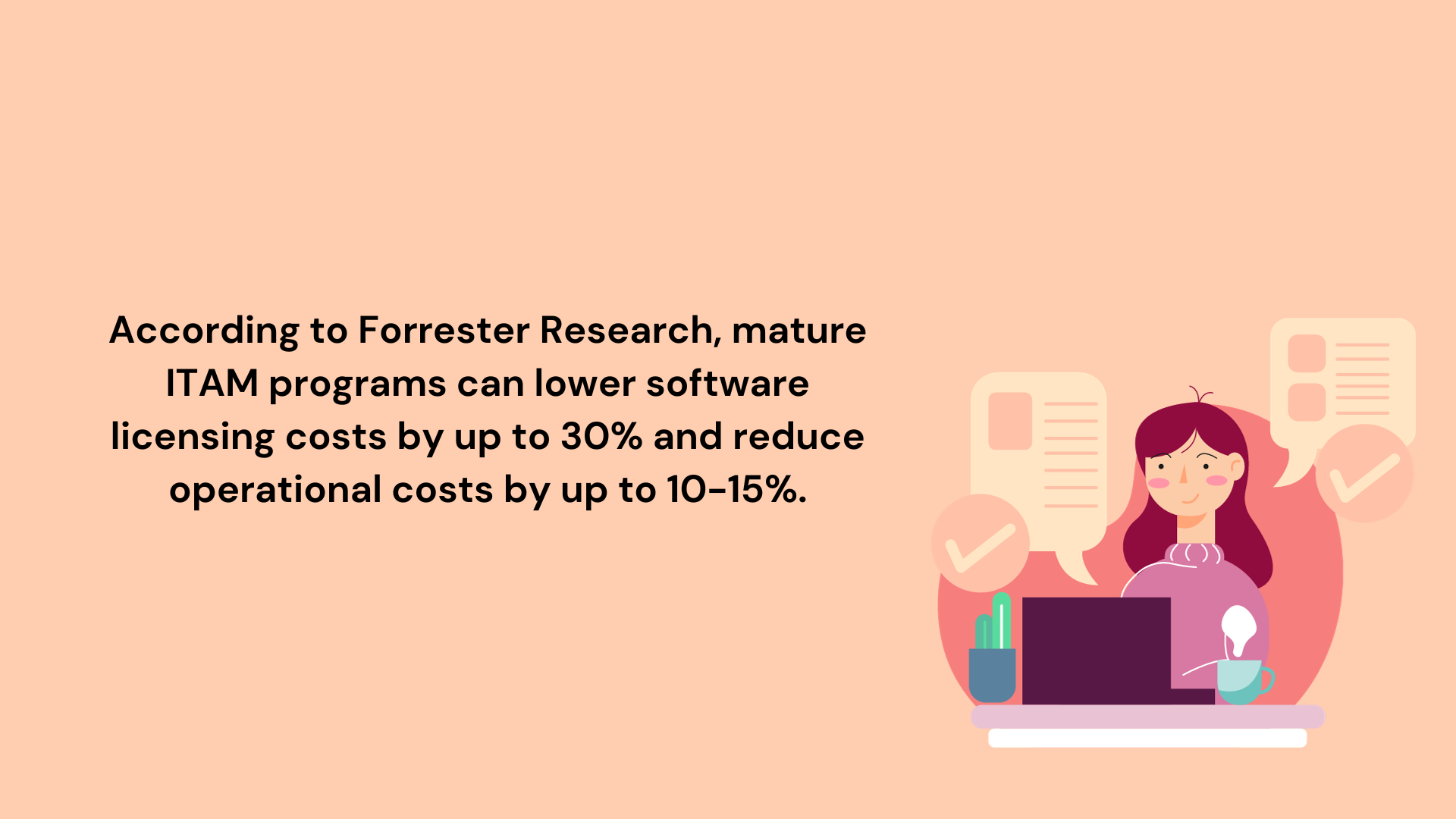
Why Is ITAM Critical for Organizations?
Why is IT Asset Management (ITAM) critical for organizations? There are several reasons why ITAM should be a priority:
Reduce costs
IT assets are expensive. Hardware, software, and cloud services cost money. Without visibility into what you have, you won’t know if you’re overspending or using licenses efficiently.
ITAM helps track assets so you can avoid redundancies and ensure licenses are up to date, minimizing unnecessary expenditures, and optimizing spending.
Improve security
When you don’t have an accurate inventory of all devices, software, and cloud services in use, you have blind spots that can be targeted. ITAM improves visibility so you can identify risks and vulnerabilities.
Stay compliant
Compliance is easier. Regulations like GDPR require companies to know what data they have and where it resides.
ITAM provides the inventory and documentation needed to prove compliance in audits.
Improve decision-making & operational efficiency
When you know what IT assets you have, where they are, and how they’re configured, it’s much easier to troubleshoot issues, deploy software updates, ensure network security, and plan for growth.
Accurate asset data can inform strategic decisions around IT investments, the retirement of outdated systems, and the allocation of resources which will make the operations run smoother.
The bottom line? ITAM pays off through cost savings, risk mitigation, compliance enablement, and operational efficiency.
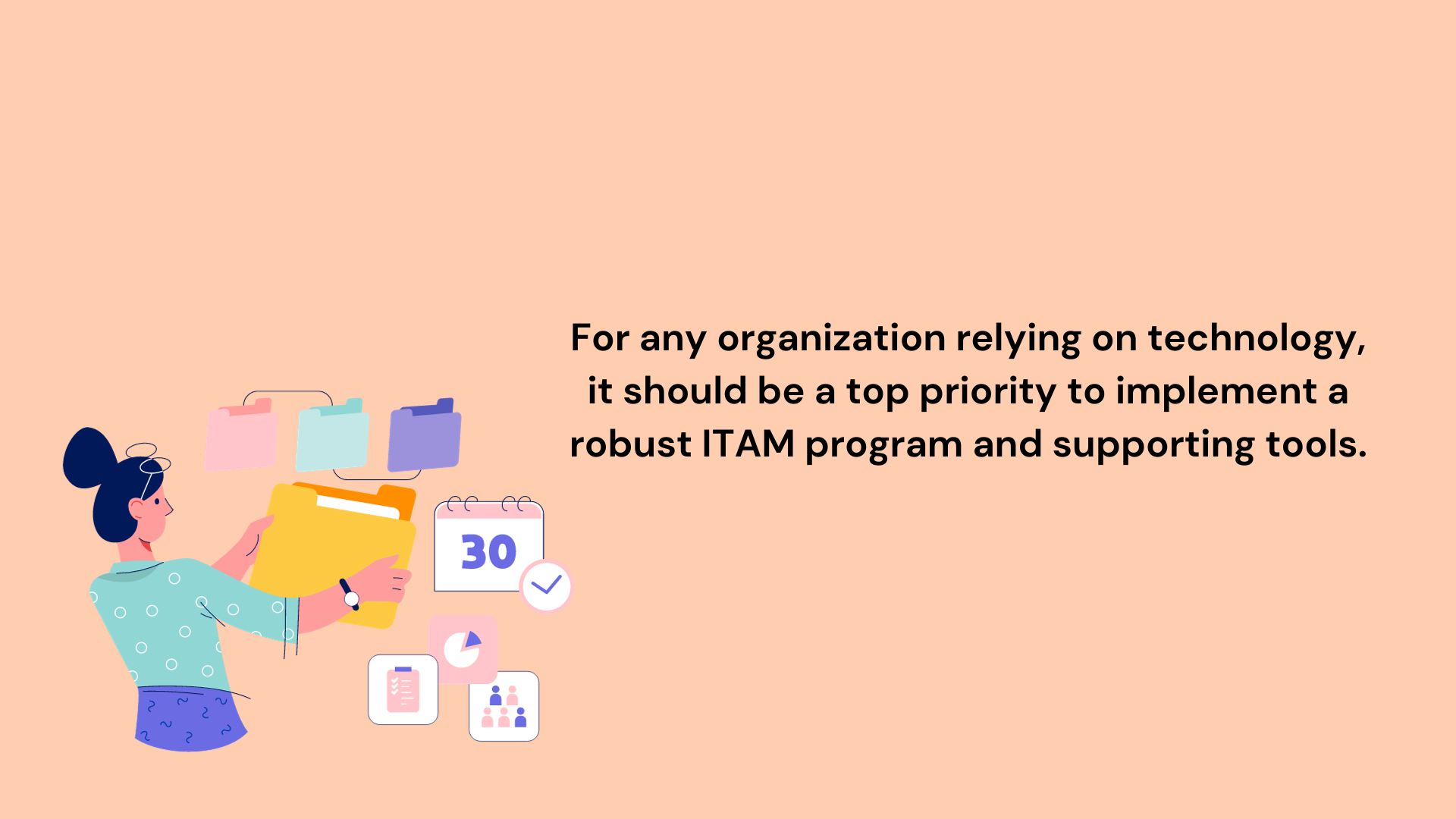
The ITAM Process Step-by-Step
The ITAM process typically follows a few key steps to keep your IT assets organized and secure.
Discover
The first step is to discover all the IT hardware and software assets in your organization. This includes things like laptops, servers, routers, and of course, all the applications and software licenses you have.
You'll need to record details like serial numbers, purchase dates, support contracts, and usage. It's a big task, but essential to gain visibility into exactly what you have.
Track
Next, you need to track all these assets in one central location, like an ITAM tool. Record when assets are reassigned, replaced or retired.
Track usage and costs associated with each asset. See which are coming up for renewal. All this information will help you make better decisions about your IT investments.
Manage
With your assets now tracked in a database, you can properly manage them. Make sure all software is up to date with the latest patches.
Reassign or retire outdated hardware. Review support contracts and renew or renegotiate them as needed.
Set alerts to notify you when an asset is due for replacement or a license is expiring soon.
Staying on top of all these details prevents security risks, ensures compliance, and avoids unnecessary costs.
Optimize
The final step is to continuously optimize your IT asset usage. Look for opportunities to reduce waste, cut costs, or improve efficiency.
You may find some software licenses are underutilized and can be reassigned or terminated. Some hardware may still have life in it for less critical needs.
The more you understand about your IT assets, the more you can strategize ways to optimize them.
ITAM is an ongoing cycle, not a one-and-done process. Fundamentally, implementing ITAM in an organization usually involves four phases:
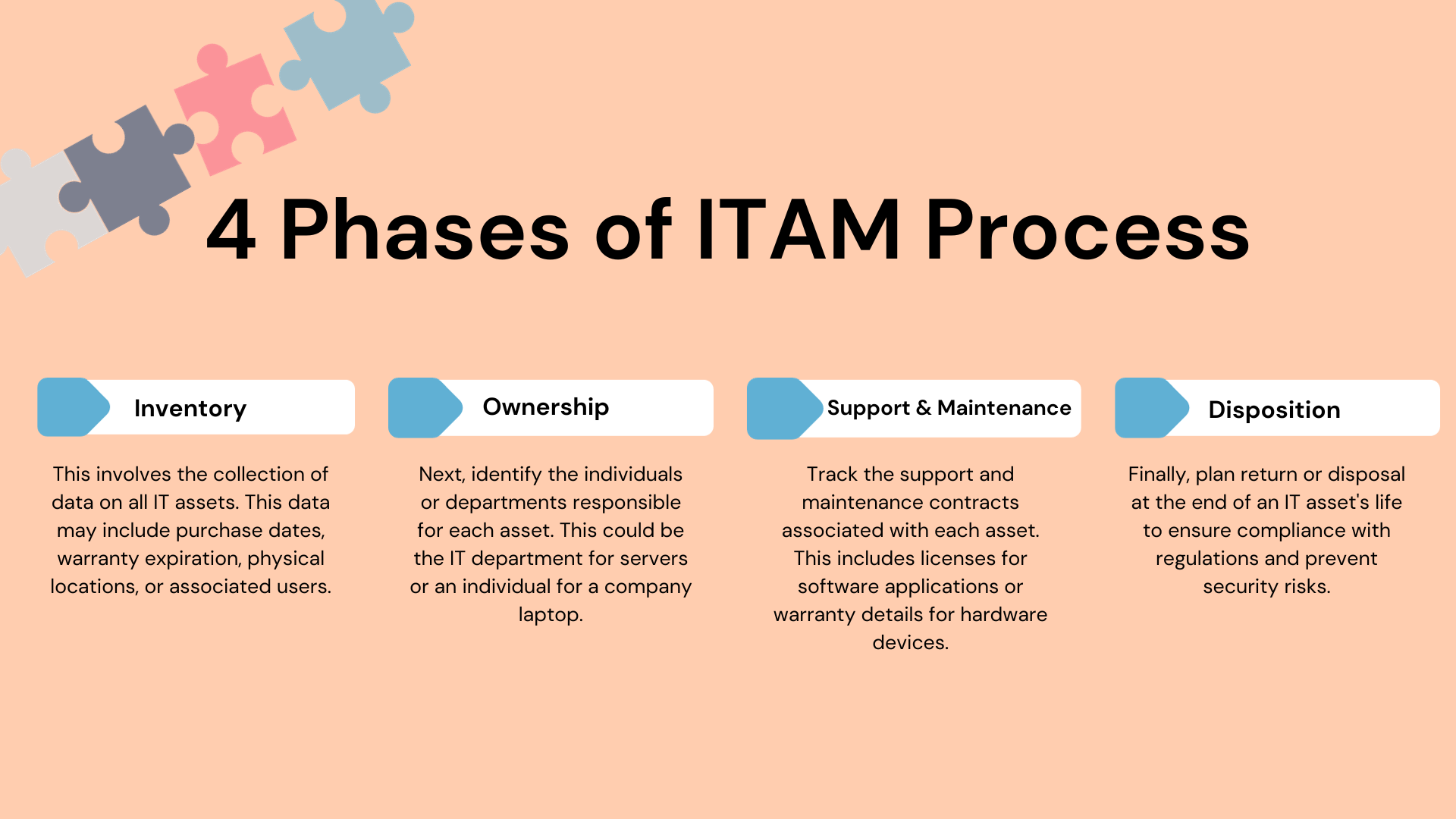
How to Select the Right ITAM Software
Choosing the right IT Asset Management (ITAM) software is crucial to successfully managing your IT assets.
There are many options out there, so take the time to evaluate and choose what will work best for your needs.
Some key things to consider:
- Functionality. Make sure the software can handle all the core ITAM functions like discovery, inventory, software licensing, and reporting. It should track both hardware and software assets. Look for additional useful features like automation, integration with other systems, and self-service portals.
- Deployment options. Choose between on-premises, cloud-based, or hybrid deployments. On-premises means installing the software on your own servers. Cloud-based is hosted by the vendor. A hybrid option uses both on-premises and cloud. Evaluate which will work with your existing infrastructure and IT resources.
- Scalability. The software needs to handle your current asset volume and scale as your organization grows. Look for a solution suited for small, mid-size, or enterprise companies depending on your needs.
- Ease of use. The interface should be intuitive and easy to navigate. Minimal training should be required for staff to start managing assets. Look for software with features like guided workflows, pre-built templates, and an organized UI.
- Integration. For the best functionality, choose software that integrates with tools you already use like configuration management databases (CMDBs), IT service management (ITSM) solutions, or enterprise resource planning (ERP) systems. APIs and out-of-the-box connectors make integration easier.
- Reporting and analytics. Robust reporting and analytics provide insights into your IT asset data. Look for dashboard views, pre-built reports, and the ability to create custom reports. Analytics features like trend analysis, asset lifecycle tracking, and risk detection are useful.
- Customer support. Evaluate each vendor’s customer support options like online resources, phone support, and service level agreements (SLAs). Good support will help you get the most out of the software and resolve any issues.
Implementing ITAM Best Practices
Once you have a solid ITAM program and software in place, it’s time to implement best practices.
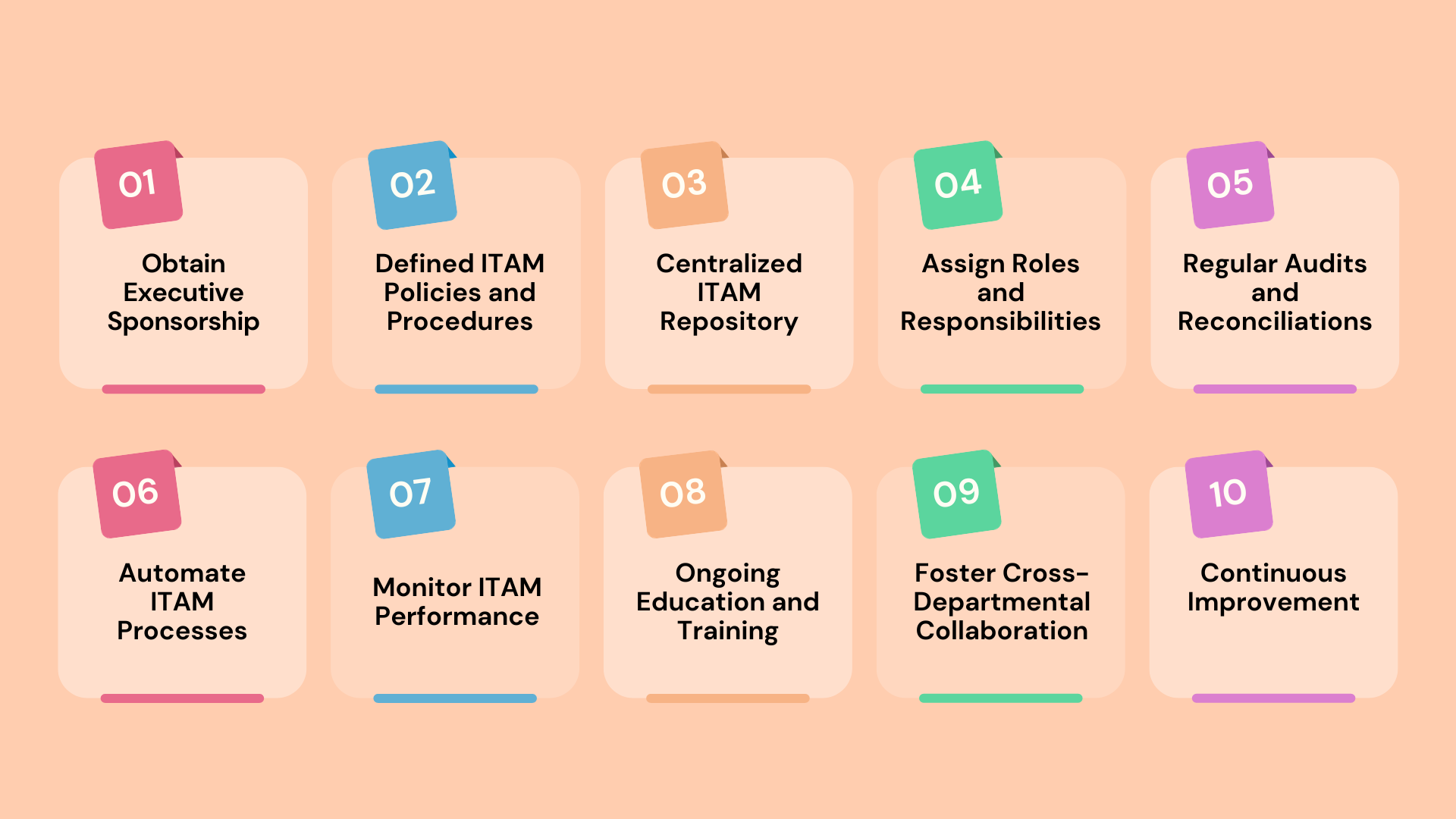
Those are best practices that can serve as your roadmap to bolstering your IT efficacy, still not quite sure how to implement one? No worry! We’ve outlined 5 secret keys you can follow:
Start with a Pilot Program
Don’t roll ITAM out to the entire organization at once. Start with a pilot program for one department or business unit. Work out any kinks, make adjustments, and then expand from there.
This approach allows you to get buy-in from key stakeholders and work through challenges on a small scale before an enterprise-wide launch.
Focus on High-Value Assets First
Prioritize mission-critical and high-value technology assets like servers, routers, and firewalls.
Get your arms around where those assets are, their configurations, and license details. Then move on to desktops, laptops, tablets, and phones.
A staggered approach will make the process less overwhelming for your team.
Automate Wherever Possible
Leverage automation tools for software license management, IT asset inventory, and other ITAM tasks.
Manual processes are inefficient, costly, and prone to human error. Automation eliminates redundancies and helps ensure data accuracy.
It is reported businesses could save up to 30% of their time by automating their ITAM processes.
With the right ITAM solution, many routines like software license reconciliation and hardware asset discovery can be automated.
Define Clear Roles and Responsibilities
Establish who is responsible for what—from data input to report generation to audit support.
When roles and responsibilities are not clearly defined, accountability suffers and ITAM programs fail.
Make sure each team member understands their part in the overall ITAM process.
Continuous Improvement Is Key
ITAM is not a set-it-and-forget-it initiative. It requires ongoing management, updates, and improvements to be effective.
Review and revise ITAM policies and procedures regularly based on changes in regulations, business objectives, and new technology. Continual optimization is the key to ITAM’s success.
Conclusion
So there you have it - a deep dive into IT Asset Management and why it should matter to you.
ITAM isn't the flashiest part of IT but it's the foundation that keeps everything running smoothly.
Now that you understand what it is, why it's so important, how to choose the right tools, and how to build an effective process, you're ready to get started.
Take it one step at a time, get buy-in from leadership, find the solution that fits your needs, and start implementing.
Before you know it, you'll have complete visibility and control over your IT assets.
Your tech life will run more efficiently, compliance and security risks will decrease, and you'll be on the path to optimized spending and improved service delivery.
ITAM isn't rocket science but it makes a world of difference. You've got this!
